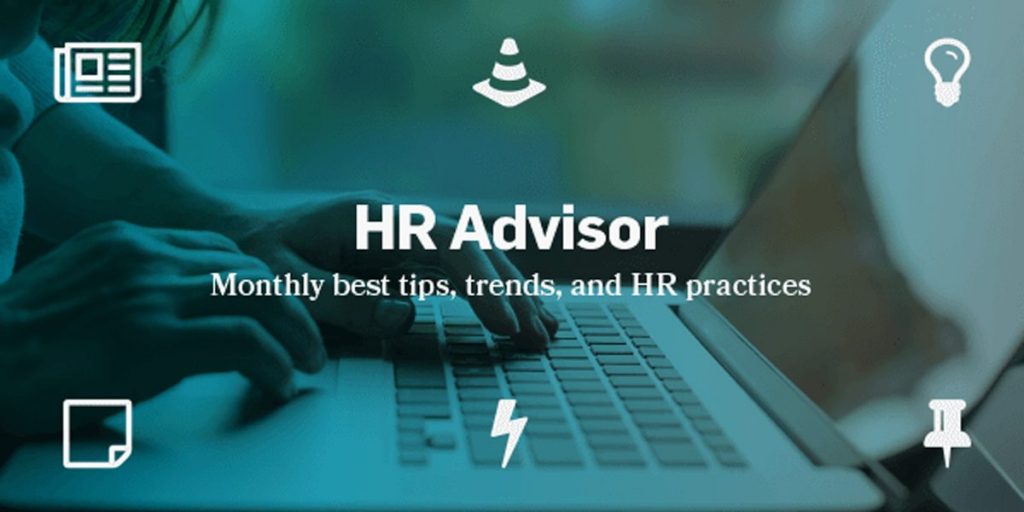Welcome to the February edition of the HR Advisor Newsletter. This month’s featured article will show you how to coach your employees effectively. We also have reminders about OSHA recordkeeping and the new test for unpaid interns. Finally, we explain how diversity benefits your bottom line. Thank you for reading!
Three Tips for Effective Coaching
The performance of your company is directly tied to the performance of your employees, so one of the best ways to develop your company is to develop the people who work for you. While you can motivate your employees by rewarding success and disciplining failure, these incentives and disincentives will only get you so far. If your employees only perform well to get a reward or avoid discipline, they’re not truly invested in your company’s success. A great way to get employees invested is to invest in them. And one way you can do that is through coaching.
Coaching is a management style that develops employees by assessing, improving, and tracking their knowledge, skills, and abilities. Whereas training is task-oriented—teaching employees how to do something or in what circumstances to do something—coaching is people-focused. Each employee you coach is different. Each has unique strengths to grow and weaknesses to overcome. Coaching meets each person where they are and guides them along the path to improvement.
Because coaching focuses on the individuals being coached, it can’t be fully standardized. Nevertheless, there are ways to ensure that your coaching efforts are effective. Here are our three tips for effective coaching:
Take a collaborative approach
Coaching works best when employees assume ownership over their own professional development and improvement. It’s a collaborative approach, not a top-down one. The coach is there to support, guide, encourage, and empower employees, not provide them with solutions.
Coaches do all this by asking employees questions. For example, instead of telling an employee how they could be more efficient with their time, a coach would ask the employee to come up with ways to be more efficient. By asking questions along these lines, the coach puts the responsibility for finding solutions on the employee. The questions continue when it’s time to evaluate the solutions the employee wanted to try. Together employee and coach discuss what worked and what didn’t.
Coach everyone, not just poor performers
If you only coach the poor performers, you create the impression that coaching is something to be avoided. Employees won’t want to be coached because they’ll associate it with discipline or performance management instead of professional development.
Everyone can improve, so everyone should be coached. The coaching of top performers might focus more on developing strengths than overcoming weaknesses, but even the best performers can benefit from professional development. Just ask star athletes.
When everyone receives coaching, people don’t look down on it or assume they’re in trouble if they’re coached. Rather, when you invest in the development and success of all your employees, your coaching becomes a sign of your commitment to them and the trust you’ve placed in them. The best way to receive commitment and trust from others is to give them your commitment and trust. Coaching can be a great way to do just that!
Coach with future goals in mind
Coaching can also be a way to prepare your workforce for the future needs of the company. As your company grows, you may need employees to have new or different knowledge, skills, and abilities to meet your goals. While you may be able to hire for those future needs, you can engage your current employees (and save money in the long run) by preparing them to take on future roles in the company. In other words, you can align your company goals with the professional goals of your employees. You could do this by asking your employees to formulate their professional goals and explaining how those goals could contribute to the success of the company.
While you can’t prevent employees from going elsewhere with the knowledge, skills, and abilities they gain at your company, you can give them reasons to stay. People like to feel that they belong and are important. When your employees can see that their individual professional goals will contribute to the company’s success, when they have a voice in how those goals are pursued and achieved, and when they’re supported throughout, they’re much more likely to commit to the company.
 Content Spotlight
Content Spotlight
Guide on Coaching
Using coaching in your management style will create an environment that encourages growth and critical thinking. See our “Workplace Coaching Guide and Sample Questions” on the Support Center. It can be found with the Guides under the Documents tab. We also have a Training On-Demand on the topic of employee coaching. Search “Workplace Coaching” on the Support Center.
 HR Alerts
HR Alerts
DOL Adopts New Unpaid Intern Test
Last Friday, the Department of Labor (DOL) adopted a new test for unpaid interns. Employers should use this test—called the primary beneficiary test—when determining if a worker can be properly classified as an unpaid intern or if they need to be classified as an employee and paid minimum wage and overtime. The test adopted by the DOL has already been in use in four federal appellate courts, most recently the Ninth Circuit Court of Appeals. The DOL’s switch to the primary beneficiary test creates a nationwide standard.
Balancing v. All-or-Nothing
Previously, the DOL was using a six-question all-or-nothing test. An employer needed to be able to say “yes, the internship does that” to all six questions or else classify the worker as an employee. The new test is a balancing (or factors) test and has seven questions. No single question will disqualify the worker from being classified as an unpaid intern. Instead, the employer may look at the answers as a whole.
The New Questions
The new questions overlap significantly with the old questions. The major element missing from the new test is whether the intern is providing tangible benefit to the employer. The old test indicated that the employer should receive little to no benefit from the services of an unpaid intern, with the exception of goodwill and a qualified future applicant. The new test doesn’t ask if the employer is receiving a benefit.
In place of questions about whether the employer receives any benefits, the new test places more emphasis on the internship being academically focused. Only one of six questions in the old test asked about the training and educational aspects of the job, whereas four of seven do in the new test. Employers are free to look at factors outside of these seven, but should be careful about stretching to find new questions if these seven lead to an answer of “paid employee.”
Under the primary beneficiary test, employers should consider the following:
- The extent to which the intern and the employer clearly understand that there is no expectation of compensation. Any promise of compensation, express or implied, suggests that the intern is an employee.
- The extent to which the internship provides training that would be similar to that which would be given in an educational environment, including the clinical and other hands-on training provided by educational institutions.
- The extent to which the internship is tied to the intern’s formal education program by integrated coursework or the receipt of academic credit.
- The extent to which the internship accommodates the intern’s academic commitments by corresponding to the academic calendar.
- The extent to which the internship’s duration is limited to the period in which the internship provides the intern with beneficial learning.
- The extent to which the intern’s work complements, rather than displaces, the work of paid employees while providing significant educational benefits to the intern.
- The extent to which the intern and the employer understand that the internship is conducted without entitlement to a paid job at the conclusion of the internship.
 Did You Know?
Did You Know?
Fostering diversity in the workplace isn’t just the right thing to do; it will ultimately help your bottom line.
Diversity comes in many forms. The most obvious may be race, sex, and age, but it makes sense to consider other aspects of applicants’ and employees’ backgrounds. Having contributors from different regions of the country (or world!), different socioeconomic backgrounds, and different career paths will provide you with a variety of perspectives on what your clients and customers are looking for and how you can provide a product or service that will appeal to the widest possible audience.
To learn more, type diversity into the search bar in the HR Support Center for dozens of resources, including numerous trainings in a variety of formats.
Anchor Payroll
PO Box 39
Chester, NJ 07930
Additional Contacts
Phone: 800-660-7089
Fax: 888 600 0191
Email: info@anchorpays.com



